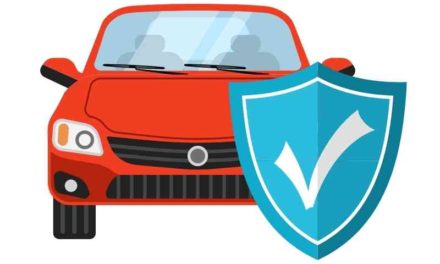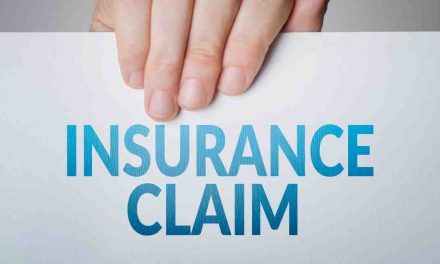If you are a rideshare driver for Uber, Lyft, or any other app-based service, you may wonder how insurance companies verify your lost earnings if you get into an accident that prevents you from working. Whether you are at fault or not, you may be entitled to compensation for your income loss, but you will need to prove it to the insurance company. Here are some tips on how to do that.
Understand the insurance coverage for rideshare drivers
Rideshare drivers need to have both personal and rideshare insurance to be fully covered while driving for money. Personal insurance covers you when you use your car for personal purposes, while rideshare insurance covers you when you are logged into the app and waiting for a ride request, or when you have accepted a ride and are carrying passengers.
Rideshare companies like Uber and Lyft also provide some insurance coverage for their drivers, but it varies depending on the phase of the ride. When you have the app on and are waiting for a request, the coverage is minimal and may not cover your medical expenses or lost wages. When you have accepted a ride and are carrying passengers, the coverage is more comprehensive and includes liability, collision, comprehensive, and uninsured/underinsured motorist coverage.
However, even with the rideshare company’s insurance, you may still need to file a claim with your own rideshare insurance or the other driver’s insurance if you are not at fault. The rideshare company’s insurance may have deductibles, limits, or exclusions that could affect your compensation.
Gather evidence of your rideshare income
To verify your lost rideshare earnings, you will need to provide evidence of your income before and after the accident. This can include:
- Bank statements showing your deposits from the rideshare company.
- Tax returns or 1099 forms showing your annual or quarterly income from the rideshare company.
- Screenshots of your app showing your earnings history, ratings, and number of trips.
- Statements from the rideshare company showing your earnings breakdown, fees, bonuses, tips, and incentives.
- Any other documents that can prove your income from the rideshare company?
You will also need to show how the accident affected your ability to work as a rideshare driver. This can include:
- Medical records showing your injuries, diagnosis, treatment, and prognosis.
- Doctor’s notes or disability certificates stating how long you are unable to work or drive.
- Receipts for any medical expenses or out-of-pocket costs related to your injuries.
- A letter from your rideshare company confirming that you are an active driver and that you have been deactivated or suspended due to the accident.
- Any other documents that can prove your loss of income due to the accident?
Calculate your lost rideshare earnings
Once you have gathered all the evidence of your income and loss of income, you will need to calculate how much money you have lost due to the accident. This can be done by comparing your average income before the accident with your actual income after the accident.
For example, if you earned $500 per week on average before the accident, and you were unable to work for four weeks due to the accident, then your lost earnings would be $2,000 ($500 x 4). However, if you were able to work part-time after the accident and earned $200 per week, then your lost earnings would be $1,200 ($500 – $200 x 4).
You may also need to factor in any future loss of income if your injuries prevent you from working as a rideshare driver permanently or for a long period of time. This can be done by projecting your future income based on your past earnings, growth potential, and expected retirement age. You may need to consult an expert such as an economist or a vocational specialist to help you with this calculation.
Submit your claim for lost rideshare earnings
After you have calculated your lost rideshare earnings, you will need to submit your claim to the insurance company that is responsible for paying you. This could be:
- Your own rideshare insurance company if you have collision or comprehensive coverage and you are at fault or partially at fault for the accident.
- The other driver’s insurance company if they are at fault or partially at fault for the accident.
- The rideshare company’s insurance company if they are liable for the accident or if the other driver is uninsured or underinsured.
You will need to fill out a claim form and attach all the evidence of your income and loss of income that you have gathered. You will also need to write a demand letter stating how much money you are asking for and why. You should include a breakdown of your lost earnings calculation and explain how the accident affected your ability to work as a rideshare driver.
You should send your claim by certified mail with return receipt requested so that you have proof that it was received by the insurance company. You should also keep copies of everything you send and receive for your records.
Negotiate your settlement for lost rideshare earnings
Once the insurance company receives your claim, they will review it and either accept it, reject it, or make a counteroffer. They may also ask you for more information or evidence to support your claim. You should respond to their requests promptly and politely, but do not agree to anything without consulting a lawyer first.
If the insurance company accepts your claim, they will send you a settlement offer that states how much money they are willing to pay you for your lost rideshare earnings. You should review the offer carefully and make sure that it covers all your losses and expenses. If you are satisfied with the offer, you can accept it and sign a release form that waives your right to sue the insurance company or the rideshare company for more money in the future.
If the insurance company rejects your claim or makes a lowball offer, you can negotiate with them to get a higher amount. You should write a response letter that explains why you deserve more money and provide more evidence or arguments to support your claim. You should also state the minimum amount that you are willing to accept and give them a deadline to respond.
You may need to go back and forth with the insurance company several times until you reach a mutually agreeable settlement. If you cannot reach a settlement, you may need to file a lawsuit against the insurance company or the rideshare company to get the compensation you deserve. You should consult a lawyer who specializes in rideshare accidents and personal injury cases to help you with this process.
Conclusion
Rideshare drivers who get into an accident that prevents them from working may be entitled to compensation for their lost earnings, but they will need to prove it to the insurance company. They will need to have both personal and rideshare insurance, gather evidence of their income and loss of income, calculate their lost earnings, submit their claim, and negotiate their settlement. They may also need to hire a lawyer to help them with their case.
If you are a rideshare driver who has been injured in an accident that was not your fault, you should contact a lawyer as soon as possible to protect your rights and get the compensation you deserve. A lawyer can help you with all the steps involved in verifying your lost rideshare earnings and getting the best possible outcome for your case.
Works Cited :
(1) Rideshare Insurance Verification API – Canopy Connect. https://www.usecanopy.com/solutions/rideshare
(2) Rideshare Insurance for Drivers: Where to Buy It, What It Covers. https://www.nerdwallet.com/article/insurance/rideshare-insurance
(3) Insurance coverage while driving with Lyft – Lyft Help. https://help.lyft.com/hc/e/all/articles/115013080548-Insurance-coverage-while-driving-with-lyft

Meet Krishnaprasath Krishnamoorthy, a finance content writer with a wealth of knowledge and experience in the insurance, mortgage, taxation, law, and real estate industries.




